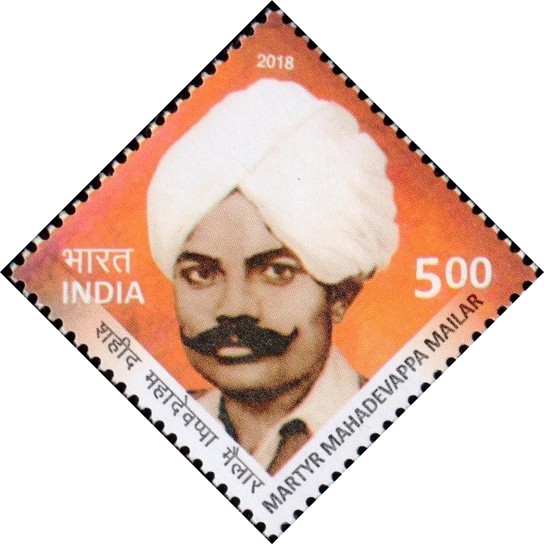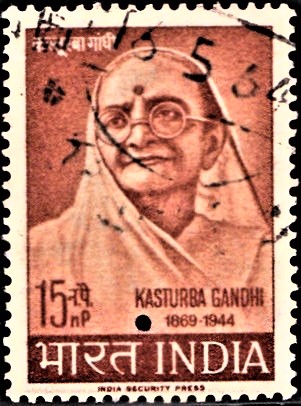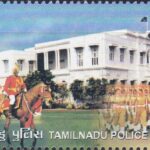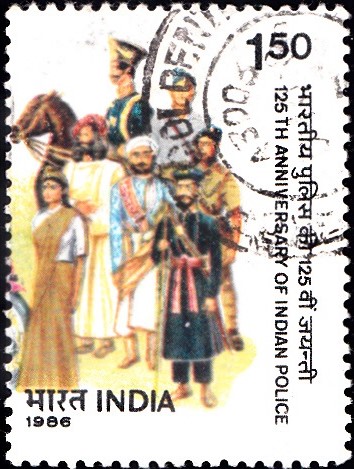
Mahadevappa Mailar
A commemorative postage stamp on Martyr Mailara Mahadevappa, an Indian freedom fighter and revolutionary from Karnataka, accompanied Gandhiji in Dandi March :
 Issued by India
Issued by India
Issued on Sep 3, 2018
Issued for : Department of Posts is pleased to issue a Commemorative Postage Stamp on Martyr Mahadevappa Mailar.
Credits :
Stamp/Sheetlet/FDC/Brochure/Cancellation Cachet : Smt. Nenu Gupta
Type : Stamp, Mint Condition
Colour : Multi Colour
Denomination : 500 Paise
Stamps Printed : 601350
Sheetlets Printed : 1.1 lakh
Printing Process : Wet Offset
Printer : Security Printing Press, Hyderabad
Name : Mailara Mahadevappa
Born on Jun 8, 1911 at Motebennur, Haveri district, Karnataka, India
Died on Mar 31, 1943 at Hosaritti, Haveri district, Karnataka, India
About :
- Mailer Mahadevappa was born on 8 June, 1911 at Motebennur Village, Haveri district, Karnataka. His father Mahanthappa alias Marthand and mother Basamma were dedicated patriots. Mahadevappa was deeply influenced by the pious values of his parents. At a very young age he was imbued with the ideas of love for the country. He studied in the villages of Motebennur and Haushabhavi Haveri district. His teachers explained to him the significance of the freedom struggle under the leadership of Gandhiji and others. They explained about martyrs who gave up their life for the cause of freedom. Inspired by the encouraging talks of the teachers, Mahadeva regularly read the magazine “Young India” published by Mahatma Gandhi.
- At the age of 16, Mahadeva was married to Siddamma and bound to family affairs but he was not distracted from his passion to work for the freedom of the country. Mahadevappa had a deep desire to go to Sabarmati Ashram and get involved in its activities. Meanwhile, Gandhiji sent a message to the Indian youth organization in Dharwad to send one or two representatives to Sabarmati Ashram from Karnataka. The youth association selected the young Mahadeva to be sent to Sabarmati Ashram. Looking at the seventeen-year-old Mahadeva, Gandhiji asked him several questions and tried to find his tenacity to be in the movement. Mahadeva was successful in convincing Gandhiji and was allowed to stay in the Ashram. The main characteristics of a Satyagrahi are justice, non-violence, patriotism, purity, self-control, conviction, boldness, humbleness, unity, physical work, equality and no discrimination, peace and sacrifice. Gandhiji saw all these in Mahadevappa and was highly impressed. On 12 March, 1930 Mahatma Gandhi along with his 78 freedom fighters began his march from Sabarmati to Dandi. Mailar Mahadevappa was the only representative freedom fighter from Karnataka. Along with Gandhiji, Mahadevappa was also arrested and jailed. There he got an opportunity to stay with Mahatma Gandhi and know him closely.
- Mahadevappa was the only person to take part in Salt Satyagraha and his wife Siddamma was the only woman to take part in the Civil Disobedience Movement from Karnataka. When Mahadevappa and his wife left Gujarat and returned to Karnataka, they received a grand reception from the people of Dharwad, Haveri and Motebennur. In Koradur village on the bank of the river Varda in Haveri district they established Ashram called “Gram Sevashram”. They included people from all castes, creeds and religions. Hindus, Muslims, Christians and people from different castes joined them and served in the Ashram. The objective of the Sevashram was to eradicate poverty, practice of untouchability and ignorance in the villages. Gram Sevashram was working like Sabarmati Ashram. Thousands of young people were trained to fight in the freedom struggle. The Ashram became a school, a Yoga Kendra, a hospital and a temple for villagers.
- During the Quit India Movement, Gandhiji gave the clarion call ‘Do or die’. A great movement to oust the British was unleashed. Mahadevappa lead the movement of South division of Dharwad. He started Kara Nirakarane i.e. refusal to pay land revenue movement. He encouraged farmers not to pay land revenue to the Government. This movement spread like wild fire. The lands of those peasants who did not pay taxes were confiscated. Meanwhile, some peasants joined hands with the British and purchased those confiscated lands. Mahadevappa and his companions did Fasting Protest in front of the houses of the Zamindars. He was able to convince the Zamindars to give back the lands purchased by them. This success inspired the peasants and later as a mark of protest, all the peasants decided to stop paying tax. British government completely failed to collect taxes. This struggle was based on truth and non-violence.
- Thereafter, Mahadevappa formed an organization of youth and started guerilla warfare. It was aimed at foiling the conspiracy of the British. British Government collected land revenue from farmers applying coercive method and kept it in Veerabhadreswar Swamy Temple at Hosaritti Village under strict vigilance of Police force deputed from Maharashtra. Mahadevappa planned to attack by adopting guerilla war system to snatch-away revenue and records from police custody to return to farmers. On 1 April, 1943 he entered the temple early in the morning and engaged himself to break open the box, where money and records were kept. Police Inspector Pai, who was called from Maharashtra and was hiding behind Veerabhadreswar Swamy idol, fired at Mahadevappa. Mahadevappa lay in a pool of blood. His followers Tirakappa Madiwalar and Veerayya Hiremath rushed to rescue Mahadevappa. Police shot them also. Meanwhile several of Mahadevappa’s followers also came and snatched arms from police and were about to kill all police officers. Mahadevappa told his men not to kill any policemen as the freedom struggle was to be a non-violent movement. He and his other two followers lost their lives. Mahadevappa was only 32 years old when he attained Martyrdom.
- The sacrifice and courage of Mahadevappa inspired a large number of people. He was a great patriot and freedom fighter. He sacrificed his life for the service of the society and liberation of the country. After independence, a magnificent building Veera Soudha was built on his Samadhi.
- Text : Based on the material provided by the proponent.







